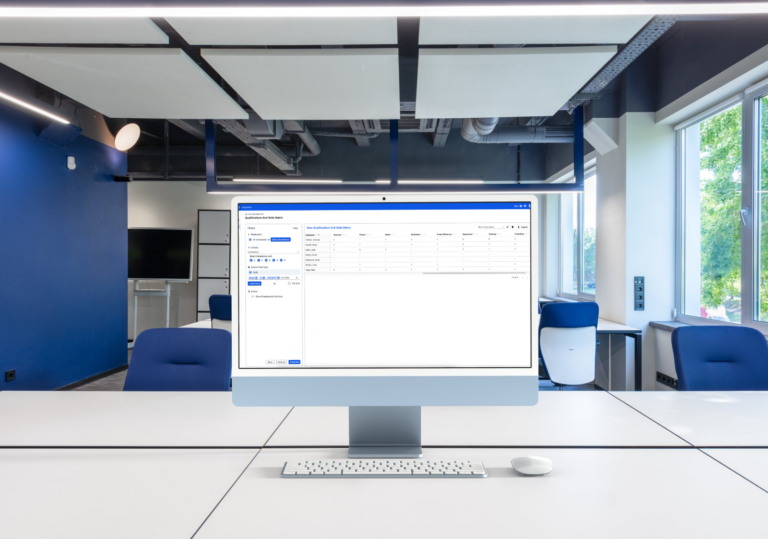Cross training has become an essential strategy for organizations looking to enhance workforce flexibility, improve productivity, and foster long-term employee engagement. Whether in a manufacturing facility, corporate office, or any other industry, cross training offers a wide array of benefits that can help companies build a more adaptable and resilient workforce. But what is cross training, and how can companies effectively implement it?
What is Cross Training?
At its core, cross training involves teaching employees new skills that go beyond their primary responsibilities. This allows workers to perform tasks outside of their specific roles, which contributes to creating a more versatile workforce. Cross functional training can take many forms, including job rotation, shadowing experienced employees, and formal learning opportunities.
The purpose of cross training employees is to ensure that they can step into different positions when needed, which can improve workflow efficiency, enhance team collaboration, and reduce bottlenecks caused by absences or turnover.
But why exactly is this important for your organization? Let’s take a closer look.
Why is Cross Training Important?
Cross training is a proactive approach to workforce management that helps organizations remain agile in an ever-changing business landscape. Below are a few reasons why it is crucial:
One of the main reasons for cross training is its ability to increase the adaptability of your workforce. By equipping employees with a range of skills, companies can ensure that their teams can adapt to changing workloads, handle emergencies, or step into new roles when needed. This is particularly valuable in industries with seasonal fluctuations or when unexpected absences occur.
Relying heavily on a few employees for specific tasks can create vulnerabilities. If these employees leave or are unavailable for any reason, it can disrupt operations. Cross training helps mitigate this risk by enabling other team members to step in and maintain business continuity.
As companies grow, they need their workforce to be flexible enough to support new roles and responsibilities. Cross training allows employees to expand their skill sets and take on more challenging tasks. This is especially beneficial when companies are scaling operations or introducing new technologies that require a broader skill set.
Benefits of Cross Training Employees
Cross training is not only beneficial for organizations but also for employees. By providing training opportunities, companies can enhance job satisfaction, reduce turnover, and improve productivity.
Employee training and certifications shows employees that the organization values their professional growth. It creates a sense of empowerment by providing workers with the tools they need to advance their careers. training can also reduce boredom and monotony, giving employees the chance to experience new challenges and roles within the company.
When employees are cross-trained, they gain a deeper understanding of their coworkers’ roles and responsibilities. This can lead to better communication and stronger collaboration across teams. Cross training helps to break down silos and fosters a more cooperative working environment, which can improve overall organizational performance.
Employees being trained in multiple disciplines can lead to a more efficient workforce. Employees who are familiar with multiple tasks can step in and support each other, reducing downtime and ensuring a more consistent workflow. This flexibility also allows for better planning and faster problem-solving, as employees can jump in where needed without waiting for specialized support.

How to Cross Train Employees
Implementing a cross training program requires careful planning and execution. Here are the key steps to ensure that employees are trained effectively:
1. Identify Key Areas for Training
The first step is identifying the roles and tasks that are critical to your organization’s operations. Focus on areas where cross training will have the most impact, such as positions that experience high turnover or those that are often understaffed.
2. Assess Employee Readiness
Not every employee may be ready for cross training. Evaluate each employee’s skills, experience, and interest in learning new roles. Ideally, employees who are open to learning new skills and have shown a commitment to the company are the best candidates for this program. Effective skill management plays a key role here, as it helps identify employees’ existing strengths and areas where additional training is needed. By assessing skills and determining readiness, organizations can ensure that the right people are selected for cross training, enhancing the overall success of the program.
3. Create a Structured Training Plan
Develop a clear and structured plan that outlines the roles, objectives, skills, and competencies for each employee. This should include a timeline for training, specific goals to be achieved, and measurable outcomes to track progress. It’s also important to ensure that employees aren’t overwhelmed with too much information at once—break the learning process into manageable steps.
4. Leverage Mentorship and Hands-On Learning
Mentorship is an invaluable tool in the training process, especially in a multi-generational workforce. Pair employees with more experienced workers who can guide them through the learning process. This cross-generational exchange fosters knowledge sharing and creates a collaborative learning environment. Hands-on, real-world experience is often the most effective way for employees to gain new skills, so encourage job shadowing and practical exercises to reinforce learning.
How to Implement Cross Training
Successfully implementing a cross training program requires more than just creating a plan. It involves leadership support, clear communication, and continuous evaluation. Here are the key steps to putting your plan into action:
- Create a Cross Training Policy: Your organization should establish a clear cross training policy that defines the objectives, scope, and expectations for the program. This policy should specify which roles will be trained, the skills to be targeted, and the expected outcomes. A policy ensures consistency and alignment with company goals.
- Communicate the Plan to Your Team: Effective communication is critical for a successful cross training program. Ensure all employees understand the purpose of cross training and how it benefits both the organization and their individual career growth. Be transparent about the program’s goals and timelines, and encourage active participation.
- Monitor Progress and Adjust: Cross training is an ongoing process. Regularly monitor employee progress to assess whether the program is meeting its objectives. Collect feedback from employees and managers to identify any challenges or areas for improvement. Based on this feedback, make adjustments to the plan to ensure continued success.
- Technology Buy-In: To streamline and optimize cross training, invest in the right technology. Tools like learning management systems (LMS) or workforce management platforms (such as Indeavor) can help track training progress, facilitate communication, and schedule sessions. Make sure all stakeholders support the technology, and ensure employees are comfortable using these tools to enhance their learning experience.
Conclusion
Cross training is a powerful strategy for enhancing workforce flexibility, increasing productivity, and preparing employees for future growth. By investing in cross training programs, organizations can improve employee morale, foster collaboration, and reduce operational risks.
Implementing cross training effectively requires careful planning, clear communication, and the right tools to track progress. When done right, cross training not only benefits the organization but also empowers employees to take on new challenges and advance in their careers.
To learn more about how Indeavor’s workforce management solutions can streamline your cross training efforts, contact us today or schedule a demo.
About the Author
Claire Pieper is the Digital Marketing Specialist for Indeavor. In her role, she specializes in crafting strategic and engaging content, ensuring that customers are well-informed. Claire is dedicated to enhancing the customer experience and optimizing the user journey through Indeavor’s solutions. To learn more or get in touch, connect with Claire on LinkedIn.



